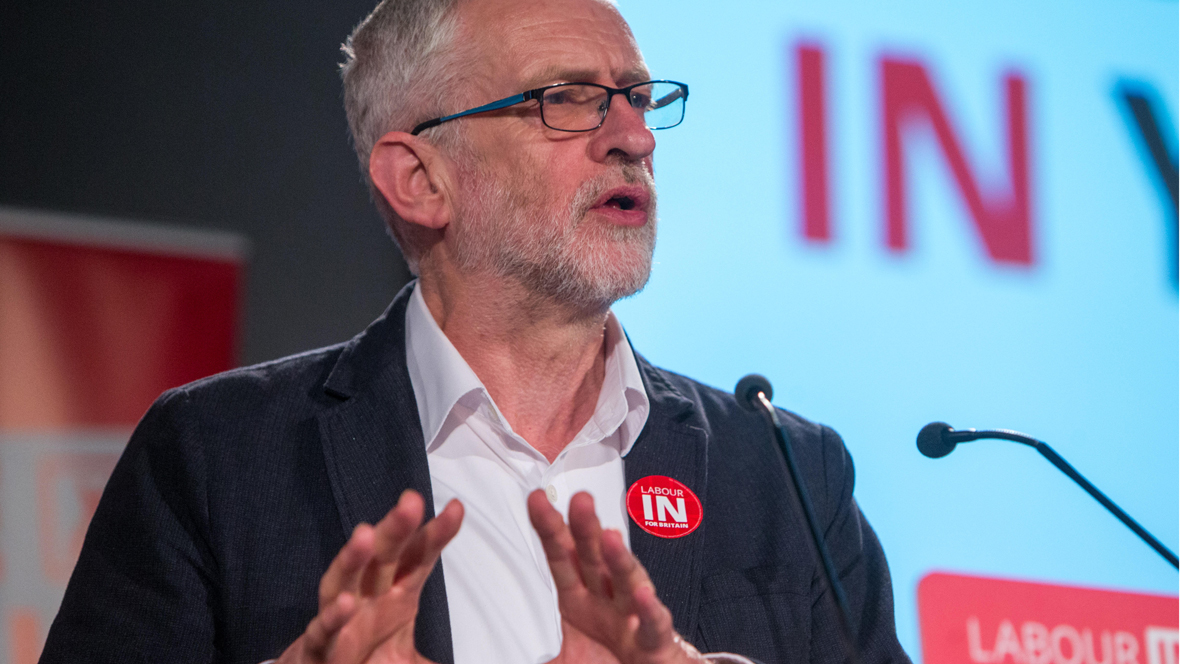
Media coverage of the EU Referendum (report 4)
This is the fourth report by the Loughborough University Centre for Research in Communication and Culture (CRCC) on national news reporting of the 2016 EU Referendum.The results in this report are derived from detailed content analysis of news coverage of the EU Referendum produced on the weekdays (i.e. Monday to Friday inclusive) between 6 May and 15 June 2016 from the following news outlets:
Television: Channel 4 News (7pm), Channel 5 News Tonight (6.30pm), BBC1 News at 10, ITV1 News at 10, Sky News 8-8.30pm.
Press: The Guardian, The Times, Daily Telegraph, Financial Times, Daily Mail, Daily Express, Daily Mirror, The Sun, Star and the I.
We analysed all EU Referendum related news found in the entire duration of all the above named television programmes. For the press, we included referendum news found on the front page, the first two pages of the domestic news section, the first two pages of any specialist election section and the page containing and facing the papers’ leader editorials. Inter-coder reliability tests were conducted to check the robustness and consistency of these measures (see the website for more information).
Regarding our terminology and coding protocols: we use the term ‘IN’ to indicate individuals and organisations supporting the case for the UK to remain in the European Union. We use the term ‘OUT’ for those advocating the UK’s departure from the EU. We do not categorise people or organisations according to our prior knowledge of their political viewpoints. Rather, individuals or organisations are only assigned to these categories when their affiliations are manifestly stated in editorial content and/or they articulate support for one of these positions.
This report has three sections, assessing:
- Stopwatch Balance – which individuals or institutions have featured most frequently?
- Directional Balance– how strongly are individual national newspapers supporting arguments for remaining in, or leaving, the EU?
- Issue Balance – which topics have received most coverage and how has the news agenda developed over the campaign?
Executive Summary
Jeremy Corbyn and the Labour party gained significantly higher levels of media coverage over the last week. Corbyn was the third most prominent politician over that period and Labour’s proportional presence rose from 10 to 22 percent.
Our analysis reveals some significant variations across news media sectors as to who has been reported and which campaign has been prioritised.
Newspapers supporting OUT carried more stories supporting the case for leaving the EU, gave greater prominence to OUT campaigners and gave them more direct quotation in their reporting. Exactly the same pattern is evident, in reverse, with pro-IN newspapers.
Television news coverage provides a stark comparison, coming close to parity in the news angles reported, the people included and the amount of quotation time allocated to each side.
Ddifferences in press and TV coverage of the Referendum campaign have not produced significant variations in the issue agenda. Across all media, this remains a very narrowly cast debate, with coverage of the campaign process, the economy and immigration accounting for around 2/3rds of coverage in TV news, pro-IN newspapers and pro-OUT newspapers.
Our week-on-week analysis of the relative prominence of coverage of the ‘economy’ to ‘immigration’ reveals that the former retained its position as the most frequently reported substantive issue. Having said this, ‘immigration’ remains a very significant subject in news coverage
Section 1. Stopwatch Balance
This section examines which individuals, organisations and institutions received most media coverage. Table 1.1 identifies the 10 most prominent politicians over the most recent sampleperiod, comparing their ranking with the preceding week.
Table 1.1: ‘Top Ten’ by frequency of appearance (10 – 15 June)
| Rank | Campaigner (Party/position) | % | Rank previous week |
|---|---|---|---|
| 1 | Boris Johnson (Con OUT) | 5.4 | 2 |
| 2 | David Cameron (Con IN) | 5.2 | 1 |
| 3 | Jeremy Corbyn (Lab IN) | 4.2 | 7 |
| 4 | George Osborne (Con IN) | 4 | 6 |
| 5= | Gordon Brown (Lab IN) | 3.3 | – |
| 5= | Priti Patel (Con OUT) | 3.3 | – |
| 7 | Nigel Farage (UKIP OUT) | 2.5 | 3 |
| 8 | Iain Duncan Smith (Con OUT) | 1.9 | 8 |
| 9 | Michael Gove (Con OUT) | 1.6 | 4 |
| 10 | Amber Rudd (Con IN) | 1.5 | – |
Key findings
- This week Jeremy Corbyn emerges as one of the main protagonists in news media reporting of the campaign.
- Gordon Brown also enters the top 10.
- Boris Johnson replaces David Cameron as the most prominent campaigner, repeating a feat only he has managed before.
- Two women enter the top ten this week including Amber Rudd for the first time in the aftermath of her televised debate with rivals including, most notably, Boris Johnson.
Figure 1.1 compares the weekly prominence of the main political parties as the campaign has progressed.
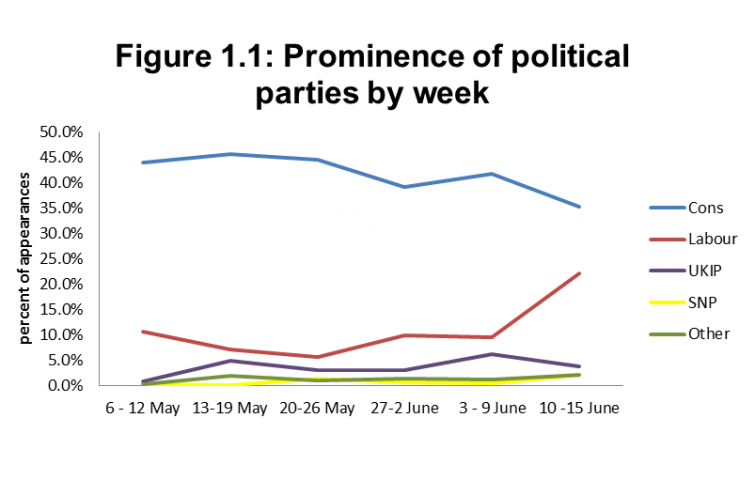
Figure 1.1: Prominence of political parties by week
- Coverage of Labour party sources has increased from 10 percent of all appearances in week 5 to 22 percent in week 6.
- Coverage of Conservative party sources has reduced from 42 percent in week 5 to 35 percent in week 6.
- UKIP’s media presence has also reduced from 6 percent to 4 percent.
- The SNP, Liberal Democrats and other parties have continued to attract negligible levels of coverage.
Table 1.2 provides an aggregated top 10 for the entire sample period.
Table 1.2: ‘Top Ten’ by frequency of appearance (6 May – 15 June)
| Rank | Campaigner (Party/position) | % | No |
|---|---|---|---|
| 1 | David Cameron (Con IN) | 9.1 | 420 |
| 2 | Boris Johnson (Con OUT) | 7 | 324 |
| 3 | George Osborne (Con IN) | 4 | 185 |
| 4 | Nigel Farage (UKIP OUT) | 3 | 138 |
| 5 | Michael Gove (Con OUT) | 2.7 | 124 |
| 6 | Iain Duncan Smith (Con OUT) | 2.5 | 114 |
| 7 | Jeremy Corbyn (Lab IN) | 1.9 | 89 |
| 8 | Priti Patel (Con OUT) | 1.1 | 53 |
| 9 | Gordon Brown (Lab IN) | 1 | 44 |
| 10 | John Major (Con IN) | 0.9 | 43 |
Notes: percentage = appearances/ total number of appearances coded
Key findings
- David Cameron and Boris Johnson standout as the main, ‘presidential’ style representatives of the IN and OUT campaigns.
- Priti Patel has emerged as the most high profile female representative in a debate in which women have been noticeably marginalised.
- Nigel Farage is ahead of Jeremy Corbyn and has established himself as the most prominent non-Conservative spokesperson in news media reporting of the Referendum.
Commentary
For the first time in the campaign since polling day Labour politicians have entered the top five in terms of media appearances by individual campaigners (Table 1.1). Jeremy Corbyn finally emerges as one of the most prominent campaigners in the debate, reflecting the promotion of Labour spokespeople as representatives of the IN cause. As a whole, the party garnered significantly higher levels of coverage. The Conservative party is still reported with greater frequency than Labour, but the coverage gap has closed markedly over recent days. Labour’s recent emergence suggests the media coverage is less concentrated within the confines of the Conservative party, but this broadening-out has not worked to the benefit of other parties. UKIP’s profile has reduced and the Liberal Democrats, Greens, SNP and others have been deemed to have little to say of consequence.
For this week, David Cameron and George Osborne continue to be among the individuals most frequently reported in the news alongside their fellow Conservative Boris Johnson. Significantly the ex-Mayor of London and OUT representative once again becomes the only person to have dislodged Cameron as the highest profile campaigner, repeating a feat he first achieved a month ago. Employment Minister Priti Patel, another Conservative OUT campaigner, achieves her best rank yet and one that establishes her as the most prominent woman to have been reported during the debate. Energy Secretary and Conservative IN spokesperson Amber Rudd enters the top ten for the first time following her high profile intervention during a televised debate in which she challenged Boris Johnson’s credibility.
Iain Duncan-Smith and Michael Gove confirm their positions as keyConservative spokespeople on behalf of the OUT campaign. Although he drops down from third to seventh place this week, Nigel Farage nonetheless consolidates his unique statusas the only representative of either side to not come from the two major parties.
Looking at the entire sample distribution, a relatively small number of politicians have emerged to dominate the debate in terms of the frequency of their media appearances (Table 1.2). But it is also possible to detect from those individuals present in the top ten some discernible media interest in another forthcoming vote: the one to decide who will be the next Prime Minister. In news terms both sides in the Referendum have effectively been led by Conservatives in the guise of the present incumbent of No.10 Downing Street and a number of others, most obviously Boris Johnson, who reportedly covet his job.
Section 2: Directional Balance
This section is concerned with the issue of ‘directional balance’ in coverage – i.e. the extent to which coverage within news media tends to incline towards arguments supporting an IN or OUTposition.In our third report we identified where individual newspapers have positioned themselves in this debate and this enables us to differentiate between pro-IN and pro-OUT titles[1].
Figure 2.1 compares the volume of items that mainly or solely favoured the IN and OUT campaigns across different media sectors. This figure is calculated by subtracting the number of items favouring IN from the number favouring OUT.
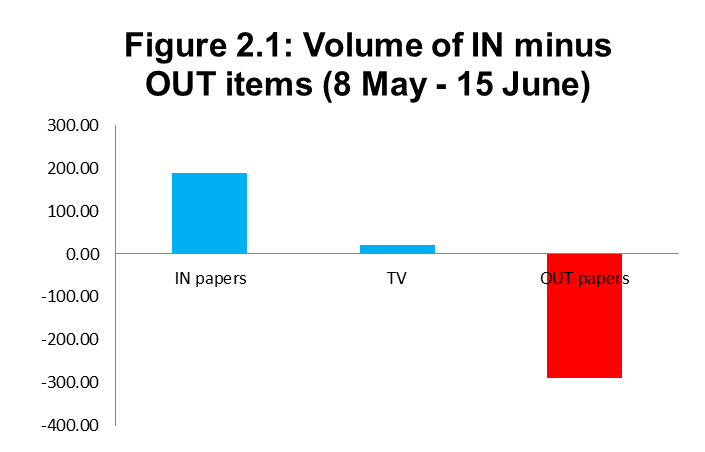
Figure 2.1: Volume of IN minus OUT items (8 May – 15 June)
Key findings
- There is a clear and considerable surplus of pro-IN orientated items in the coverage of newspapers favouring remaining in the EU.
- There is an even greater surplus of pro-OUT orientated items in newspapers favouring Britain’s exit.
- In television news there are slightly more pro-IN orientated news items, but this advantage is minor (21 items out of the 361 TV news items coded).
Figure 2.2 compares the news presence of proponents and opponents to the UK’s membership of the EU (measured by the frequency of their appearance in coverage).
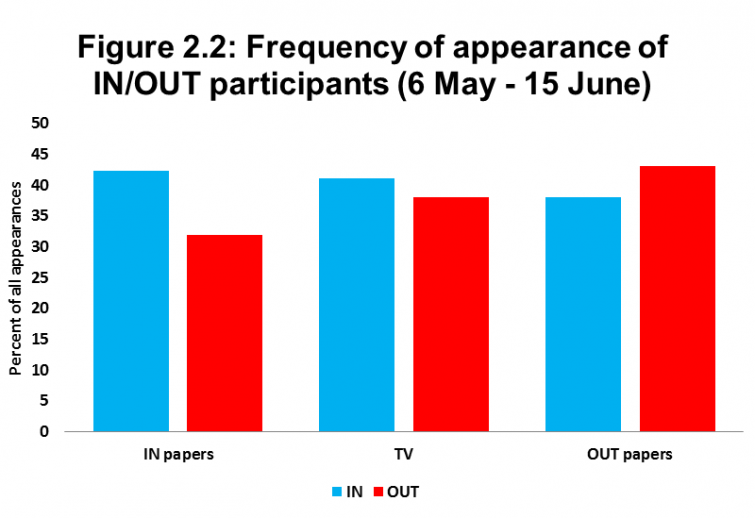
Figure 2.2: Frequency of appearance of IN/OUT participants (6 May – 15 June)
Key findings
- Pro-IN newspapers gave 10 percent more coverage to individuals and institutions supporting the UK’s continued membership of the EU.
- Pro-OUT newspapers gave 5 percent more coverage to individuals and institutions
- TV news gave 3.5 percent more coverage to individuals and institutions supporting the UK’s continued membership of the EU.
Figure 2.3 compares the amount of news access the competing camps have had, measured by the amount of direct quotation they were allocated in coverage (NB. for TV news this was measured by seconds of direct speaking time, for the press it was measured by the number of words in direct quotations).
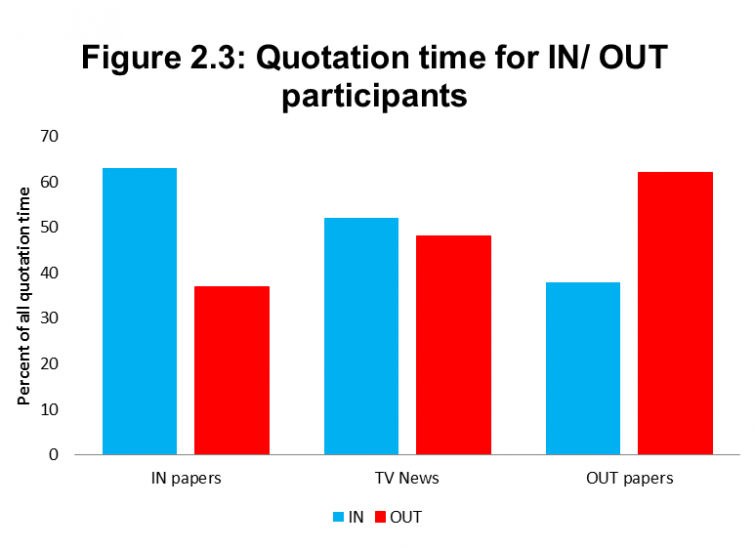
Figure 2.3: Quotation time for IN/ OUT participants
Key findings
- Pro-IN newspapers gave 26 percent more ‘speaking space’ to individuals and institutions supporting the UK’s continued membership of the EU.
- Pro-OUT newspapers gave 24 percent more ‘speaking space’ to individuals and institutions supporting the UK’s exit from the EU.
- TV news gave only 4 percent more ‘speaking time’ individuals and institutions supporting the UK’s continued membership of the EU.
Commentary
These figures demonstrate how partisan positioning in the press has manifested itself in (1) which news angles are prioritised, (2) the relative prominence of the competing campaigns, and (3) the extent to which they are directly quoted. There is a consistent patterning throughout. Pro IN papers have given more space to pro-IN advocates and arguments, just as pro-OUT papers give more space to their pro-OUT equivalents.
The results show that the biggest difference has been in the amount of direct quotation permitted to advocates of the competing positions. The analysis also demonstrates how television news coverage differs from partisan press coverage. The three measures show that TV news has orientated slightly more towards the IN campaign, but these differences are negligible compared with those found for the pro-IN and pro-OUT press.
Section 3: Issue Balance
This section examines the issue agenda in the reporting of the referendum during the sample period. What issues have dominated coverage so far, and what have failed to attract much attention? And has there been any shift in the media agenda on a week by week basis?
Table 3.1 compares the relative prominence of different issues in TV news, pro-IN newspapers and pro-OUT newspapers for our entire sample period.
Table 3.1: Top 10 issues in TV and newspaper coverage (6 May – 15 June)
| TV news |
IN newspapers |
OUT newspapers |
|
|---|---|---|---|
| Referendum conduct/process | 26 | 32 | 26 |
| Economy/business | 21 | 19 | 19 |
| Immigration | 16 | 11 | 15 |
| Public opinion/citizen engagement | 11 | 9 | 5 |
| Constitutional/legal issues | 5 | 6 | 6 |
| Employment | 4 | 4 | 4 |
| Defence/security/terrorism | 3 | 3 | 5 |
| Health/ health care provision | 2 | 3 | 3 |
| Standards/ corruption/scandals in EU | 0.4 | 2 | 5 |
| EU organisation and operations | 2 | 1 | 2 |
Key findings
- Newspapers supporting OUT and TV news have placed slightly more emphasis on immigration than newspapers supporting IN.
- All sectors have given equivalent coverage of the economic issues associated with the Referendum decision.
- The top three issues have colonised approximately 2/3rds of issue coverage across each media category.
- Pro-OUT newspapers have given greater prominence to discussions concerning political standards and scandals connected to the EU.
- The previous points notwithstanding, there is little variation in the issue agenda across the three media categories.
Figure 3.1 compares the week-on-week prominence of coverage of ‘Economy’ and ‘Immigration’ for all news organisations.
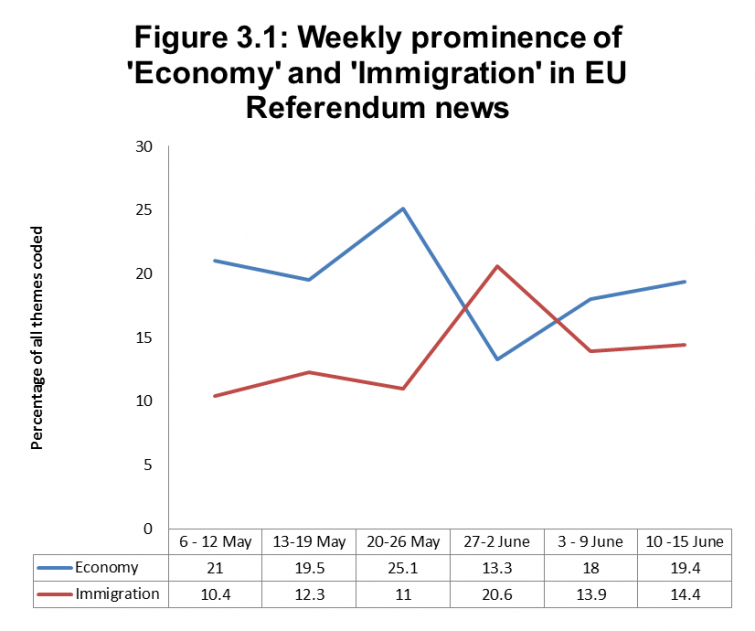
Figure 3.1: Weekly prominence of ‘Economy’ and ‘Immigration’ in EU Referendum news
Key findings
- Media coverage of economic issues related to the referendum continues to exceed coverage of immigration.
- There is no sign that the gap between them is widening or closing.
[1] Pro IN: Financial Times, Guardian, Daily Mirror, the I, The Times. Pro OUT: Daily Express, Daily Mail, the Sun, the Star, Daily Telegraph.